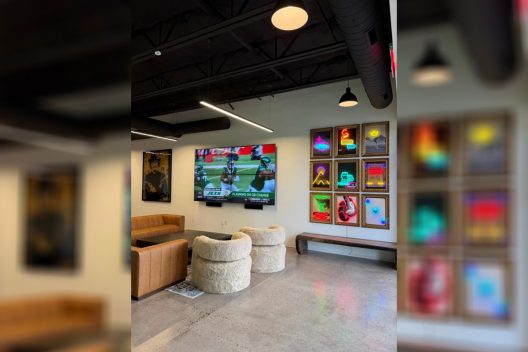
The geolocation gambit – single-vendor lock-in is now a losing bet for sportsbook operators
With the NFL season in full swing, sports betting’s rapid growth has put increasing pressure on operators’ geolocation infrastructure during peak betting periods. With NFL Sundays generating hundreds of thousands of location checks per minute, a single system failure can cost major sportsbooks millions in lost wagers and damaged customer relationships. We spoke to Chris Boni, Chief of Staff at Xpoint, about why operators must consider redundant geolocation strategies to prevent these damages before they occur.
Can you walk us through what happens when a geolocation system fails during peak betting periods like NFL Sunday, and how significant the impact is operators?
When a geolocation provider fails, sportsbooks cannot verify whether a bettor is inside a legal state boundary or betting area. By law, bets can’t be accepted without that verification, so the system defaults to blocking all wagers. On NFL Sundays, that can mean hundreds of thousands of users suddenly locked out of their accounts at once. The financial impact is immediate. Operators lose millions in missed wagers during peak windows like kick-off, halftime or other big swing moments during a game. Just as damaging is the user’s frustration. If a bettor can’t place a wager on the biggest game of the week, they will quickly turn to a competitor’s app. That moment of failure can break trust permanently, and customer churn is often more costly than the lost handle. Reliability is everything in this business. Even a few minutes of downtime during NFL season can undo years of customer acquisition and erode confidence with regulators. That’s why a single point of failure in geolocation is too risky for modern operators.
Why do most operators still rely on single geolocation providers despite these risks?
Historically, operators had no choice. Once a geolocation provider became embedded, it became the default, and multi-year contracts made switching costly. Many agreements also included restrictive terms that discouraged working with a second vendor. Over time, operators grew comfortable with the status quo. The system mostly worked, so introducing another provider seemed like unnecessary complexity. Only recently, as competition has entered the space, have operators been able to rethink that model. Still, inertia remains. Integrating a second provider requires technical investment, regulatory approval, and renegotiating legacy contracts. These hurdles explain why so many operators remain single-sourced today. Yet as the industry matures and memories of past outages linger, that reliance is looking increasingly risky and outdated.
What are the technical or business barriers that prevent operators from implementing backup systems?
The biggest issue is that sportsbook platforms weren’t originally built this way. Geolocation was designed as a single pipeline. You had one provider and that was it. Adding a secondary provider means rebuilding how your platform handles location checks and making sure the switch happens seamlessly. There are regulatory hurdles too. Each provider needs certification in every state you operate, which is time-consuming and expensive.
Cost is another factor. Geolocation is of course an expense, so paying two vendors feels like doubling up. Some early contracts had exclusivity clauses that made adding competitors financially painful. Then there’s operational complexity as running two systems means more monitoring and potential failure points. Most operators figured it was easier to stick with what they had. But when you’re losing millions during prime-time outages, these barriers suddenly look a lot more manageable.
How would a multi-provider geolocation strategy work in practice? Can systems seamlessly switch between providers?
If designed properly, operators can implement geolocation provider redundancy in a way that’s seamless to bettors. The simplest model is a primary/secondary setup. The main provider handles all checks, but if it fails, requests automatically route to the backup within seconds. For the user, the experience is seamless. They aren’t even aware of the redundancy setup and their bets go through successfully, even if the primary provider is offline. Some operators may choose a more active model, splitting a small percentage of traffic between providers at all times. This ensures the backup is always ‘warm’ and tested, and it provides constant performance benchmarking. Others might divide responsibilities geographically or by product, using one provider for sportsbook and another for online casino, for example. The key is orchestration. Operators need to establish clear failover criteria and test the process regularly. Done right, multi-provider strategies work just like redundancy in payments or other aspects.
Beyond preventing outages, what other benefits do operators gain from diversified geolocation partnerships?
Redundancy protects against downtime, but it also brings important secondary benefits. First is cost leverage. With multiple vendors in the market, operators can optimize price equation instead of being locked into higher rates from a single vendor. Competition is already driving more flexible pricing models that cut costs. Second is performance. Different providers may excel at different things, one may offer faster checks, another higher accuracy in tricky border areas. By benchmarking them against each other, operators can continually improve reliability and user experience. Diversification also drives innovation. Vendors compete to offer new features, like lighter integrations or more advanced fraud detection. Operators can adopt these faster when they’re not tied to a single partner. Finally, diversification strengthens compliance. Having more than one provider ensures operators can adapt quickly to new regulatory requirements and avoid being overexposed to one vendor’s limitations. In short, redundancy isn’t just insurance, it’s a way to improve efficiency, innovation, and long-term resilience.











